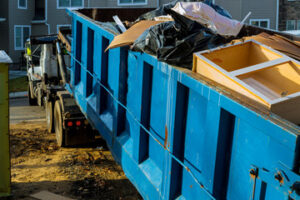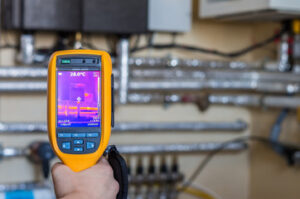Tree service professionals perform a variety of tasks to ensure the health and longevity of trees on properties. Their work reduces the risk of falling branches that might damage homes or cars and improves property value.
They also provide stump grinding services to remove remaining trunks and roots from the landscape, eliminating tripping hazards and preventing pest infestations. Ask for referrals and request a copy of their insurance before hiring a company. Visit our Website to learn more.

Tree Service is an important and sometimes dangerous job that requires special training, skills, equipment and a strict adherence to safety protocols. This commitment to safety not only protects the health of trees, but also keeps employees and customers safe by minimizing the risks associated with working at heights. Reputable tree services are licensed and insured to protect their clients from property damage, accidents, and injuries that could arise during the course of work.
Tree service professionals are trained in the science of arboriculture, ensuring that they have the knowledge and skills to perform their work safely and correctly. They are also equipped with proper personal protective equipment to minimize workplace hazards. In addition, they conduct an initial and daily jobsite survey to identify and implement controls that address all potential hazards that may be present on the job site.
One of the most common causes of injury for tree service workers is falling from a height. This can occur either while climbing a tree or after cutting an elevated branch or trunk. It’s important to work with a partner when trimming or felling a tree to ensure that you have someone nearby who can call for help if an accident happens.
Another major cause of injury is getting struck by a falling branch or tree limb. This type of accident is commonly known as a “struck by” and it’s the number one cause of serious injury or death in the tree service industry. To avoid this type of accident it’s important to clear the area around the tree where it is being trimmed or felled and to follow the two-tree rule.
It’s also a good idea to wear personal protective equipment when working with a tree, such as a hard hat, gloves and boots. You should also wear a harness and lanyards that are appropriate for the type of work you’re doing, as well as leg protection. Additionally, you should always use a chainsaw that is properly maintained and in good working condition. Additionally, you should never work on a live power line, which can be deadly.
Health
Trees add beauty and value to landscapes, but they also help to reduce soil erosion, save energy by providing cooling shade in summer and insulation from winter’s wind and improve air quality. When trees are healthy they’re able to better withstand harsh weather conditions, insect infestation and disease. Proactive maintenance including regular inspections, proper fertilization and watering will promote the health of your tree and its vigor, protecting the surrounding plants and homes.
Regular inspections can help to identify early warning signs such as root damage, fungus and insect activity. The early identification of these problems makes them easier to treat and manage, preventing them from causing costly structural or cosmetic damage.
During routine tree inspections the arborist will look at the overall structure of the tree, checking for leaning or cracking. They will also examine the foliage for any fungi or insect activity that may be damaging the tree. Signs of wilting, discoloration or strange growth patterns are a sign of stress and may indicate a problem with the roots, trunk or crown.
After a visual inspection the arborist will take into consideration factors such as the soil composition and nutrient levels and the tree’s environment to determine if any additional care is needed. This may include pruning, soil aeration or root treatments. This care will promote the health of the tree and allow it to thrive, enhancing the beauty and value of your property.
In the past, trees in urban areas were often neglected. This resulted in damaged or dying trees that had to be removed. The use of regular professional risk assessments and proactive management based on the findings can significantly reduce risks to people and property, averting costly and time consuming issues such as uprooting, insect damage and decay.
Maintaining the health of your trees is the best way to protect your investment. Regular inspections and timely actions based on the results of the risk assessment will keep your trees thriving and add value to your home. By investing in regular tree maintenance you can ensure your trees continue to provide shade, beauty and a sense of tranquility to your home for years to come.
Appearance
The appearance of trees can affect a home’s curb appeal. In addition, dead or damaged trees can pose a safety hazard and damage property. Fortunately, tree services are on hand to keep trees in good condition. These professionals specialize in pruning, removing and thinning trees to improve their health. They also offer emergency tree service following storms. In order to provide quality service, a tree service must have the proper equipment and training to do the job safely. They also need to be able to navigate their way through the work area with ease, and they should have an unhindered path from their vehicle to the tree.
A professional tree service will have extensive experience and knowledge of a variety of issues and species. They will also have a solid reputation based on positive online reviews and testimonials from previous clients. They should also have a strong commitment to environmental stewardship and use sustainable practices, such as safe and controlled dismantling of large trees, when performing their services.
People who hire tree services will often do their research before making a decision to call. They’ll look at online reviews on sites like Top Rated Local, Yelp and Facebook. They’ll also visit a tree service’s website. If the site loads slowly, doesn’t work on a mobile device or looks bad, they may be less likely to make an appointment.
The homepage of a website is one of the most important components of any business. It’s where potential customers first land and it sets the tone for how they perceive your company. A tree service’s homepage should be easy to read and clearly state their services, operating area and payment terms. They should also include a phone number, email address and contact information.
Tree care can be dangerous work, so it’s no surprise that people are very careful when choosing a tree service. They want to know that the company they choose has a good track record, a strong commitment to safety and excellent customer service. They will also carefully consider the company’s equipment and their ability to handle a wide range of tree-related issues, such as pruning, thinning, removal and stump grinding.
Value
A tree service is a business that provides maintenance and removal services for trees on private property. Their work can help protect the structural integrity of buildings and prevent damage from storms or lightning. They can also enhance the appearance of a home or commercial property by trimming and pruning trees. These companies can also help in preventing diseases from spreading and encouraging new growth. They can also provide shade and improve air quality by removing smog-causing pollutants from the environment.
The value of a tree service company is measured by the amount of money that customers spend with them over time. This can include the cost of equipment, supplies and labor. Managing these costs and ensuring customer satisfaction are vital for a successful tree service company. To do so, they should use tools such as Arborgold tree care software to minimize waste and improve profits.
Tree service companies can find ways to get new customers by using various marketing strategies. For example, they can use a targeted pay-per-click campaign to target people searching for specific keywords related to their services. This can be a great way to increase their brand awareness and get exclusive leads. However, it is important to conduct research on competitors and their advertising campaigns before investing in one.
The industry’s growth over the past five years has been fueled by favorable economic trends and increased construction spending. These trends have led to more residential demand, which has helped drive revenue for the industry. In addition, the COVID-19 pandemic accelerated growth in the sector by increasing demand for residential tree service.
Getting new tree service customers requires a thorough understanding of the market. Tree service companies should focus on identifying their target markets and create buyer personas. These personas will identify the pain points and goals of their ideal customers. They will also incorporate unique attributes, such as age and occupation, to develop a clear picture of their target audience.
Another strategy that tree service businesses can employ is to advertise their services by distributing fliers around the community. They can also use social media to promote their services. This can be a great idea for small businesses because it allows them to reach a wider range of potential customers. They can also take advantage of seasonal events and work on weekends to attract more customers.


